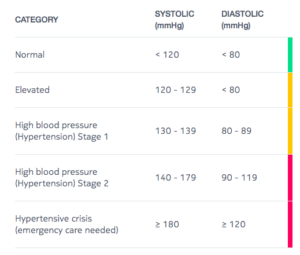The History of the “Dad Bod”
What’s a “dad bod,” and is it really a health issue? We decided to find out.
From teaching us to ride bikes to keeping us on the straight and narrow, dads are models of strength and support. And once upon a time men only worried about being a father figure, not maintaining their father figure. It turns out there is stuff that’s great and not-so great about the “dad bod” trend.
So, what is a “dad bod”?
A few years ago, the term “dad bod” took social media by storm—but instead of fizzling out after a few weeks of Internet fame, the term has become a staple in the way we describe and label male bodies. The viral spread of this trend is often attributed to Mackenzie Pearson, who wrote the blog post “Why Girls Love the Dad Bod.”
“The dad bod is a nice balance between a beer gut and working out,” Pearson explained. “The dad bod says, ‘I go to the gym occasionally, but I also drink heavily on the weekends and enjoy eating eight slices of pizza at a time.’ It’s not an overweight guy, but it isn’t one with washboard abs, either.” Additionally, she noted that men who aren’t overly focused on keeping up appearances help put their partners at ease and provide a sense of openness, whereas “ripped” bodies may seem intimidating.
Of course, while the term initially focused on describing frat boys who had skipped a few too many days at the gym, it was quickly re-appropriated by the very people it was named for: dads.
Taking back the “dad bod”
After word of the dad bod began spreading through social circuits, dads took notice, and for many, it was a validation, and for others, a wake-up call.
On the upside, a dad bod is fit and strong with a little extra padding. It shows that a dad doesn’t let himself go all the way, he just stops being a gym rat after kids. Celebrities including Will Ferrell and Jay-Z have been commended for “rocking the dad bod.”
But another way of viewing it is less flattering, because pounds on one’s middle are not a good thing for health. Abdominal weight—a key feature of the dad bod—leads to increased risk of “heart attacks, strokes, high blood pressure, cancer, diabetes, osteoarthritis, fatty liver, and depression,” according to Harvard Health. And for many dads, realizing just how out-of-control their bodies had gotten was a source of shame and self-consciousness. After all, being a dad is all about setting a strong example for your children, and while that doesn’t mean you have to be sporting six-pack abs into your seventies, it does mean showing your kids how to maintain a happy and healthy lifestyle.
Matt Weik of Weik Fitness believes firmly that a dad bod is not something to aspire to, saying, “in a nutshell, dad bod is society’s way of accepting complacency when it comes to health and exercise. We call it ‘dad bod’ to justify someone’s unwillingness to take control of his life. As the years go by, we go further down the rabbit hole when it comes to accepting obesity.” With this in mind, a few dads have taken matters into their own hands to ensure that their bodies stay healthy, and that they’ll be fit enough to attend ballet recitals and football games for years to come. Best and secured online shop to buy cialis online fast shipping cheap without prescription
Using Dad Bod for good
Naturally, for some dads, there are more important health issues to focus on than just getting fit. In 2016, one West Coast dad launched a Movember fundraising campaign called #DadBod Challenge to bring awareness and support to men’s health issues. An article in the Sonoma Index-Tribune profiled Matt Villano of Healdsburg, California and his “travel selfie spoof, a series of tongue-in-cheek portraits in which Villano wears nothing but an American flag Speedo and hiking boots or Teva sandals.” While the goal of this dad-bod exposition wasn’t to promote weight loss or healthy eating, Villano focused on raising funds for equally important health issues for men, including prostate cancer, testicular cancer, mental health, and suicide prevention.
So, whether you’re looking to tone up your dad bod or you’re simply admiring dad bods from afar, be sure to take some time to appreciate the dads in your life this month—no matter what size or shape they are!
Source: Withings Blog
—






